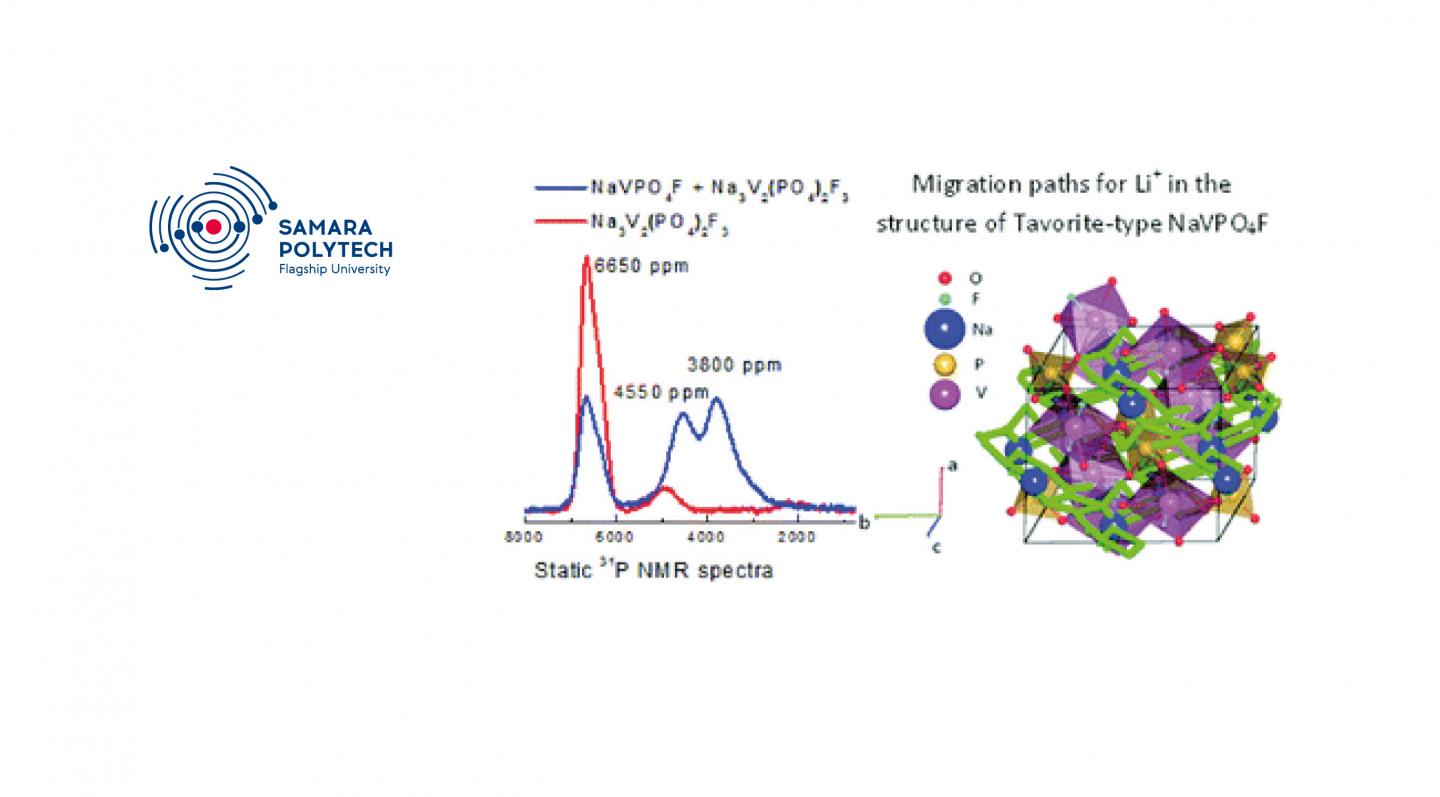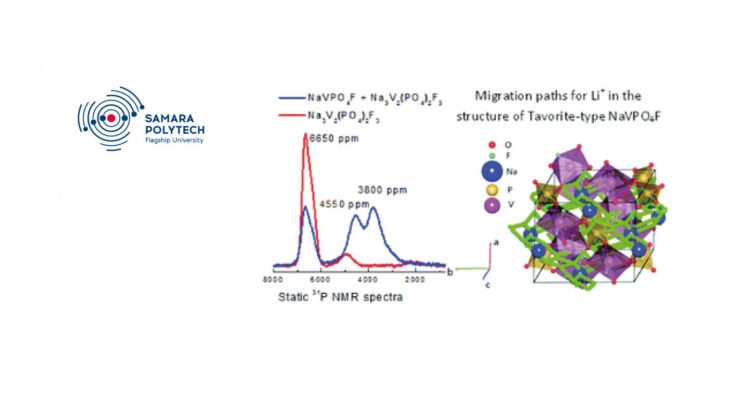The sample was first obtained by quenching

Credit: @SamaraPolytech
Cathode materials based on sodium and d-metals fluorophosphates are in great demand in the production of metal-ion batteries, because they have a rich chemical composition that allows to regulate their electrochemical properties. The research team of the scientists of Samara Center for Theoretical Materials Science of Samara Polytech, Institute of Solid State Chemistry and Mechanochemistry of the Siberian Branch of the Russian Academy of Sciences, Federal Research Center Boreskov Institute of Catalysis and P.N. Lebedev Physical Institute of the Russian Academy of Sciences found an original way to obtain monoclinic NaVPO4F by quenching. Research results are published in the journal of Physical Chemistry Chemical Physics.
A detailed study of NaVPO4F structure is conducted by means of X-ray diffraction analysis, infrared spectroscopy and nuclear magnetic resonance. A comparative analysis of NaVPO4F (with a monoclinic structure) and LiVPO4F (with a triclinic structure) is carried out. By means of theoretical methods it is proved that NaVPO4F composition has a low sodium atoms mobility, and thus its use as the cathode active material is impractical. It is also shown that the triclinic modification is energetically more favorable for the LiVPO4F compound than the monoclinic one, which, together with the sodium ions low mobility in NaVPO4F, makes the synthesis of monoclinic LiVPO4F by electrochemical exchange hardly possible.
The work of Samara Polytech employees in this area was supported by the Russian Science Foundation grant 19-73-10026.
By the way, the research team article “Crystal structure and migration paths of alkaline ions in NaVPO4F” was included in the list of the most relevant articles of 2020 according to the editors of the journal Physical Chemistry Chemical Physics.
“The field of electrochemical energy storage systems (lithium-ion batteries are the best known example) is extremely popular in modern science. The reason is the ongoing transition of modern society from fossil fuels to renewable energy sources and the wide spreading of mobile/autonomous devices”, Artem Kabanov, the senior researcher of Samara Center for Theoretical Materials Science of Samara Polytech explains. “The search for new materials for such systems is very important. Our joint work with colleagues from Novosibirsk is devoted exactly to the study of new compounds – NaVPO4F, that can potentially serve as a positive electrode. We have synthesized NaVPO4F compound using quenching and shown that it possesses low sodium ion mobility and is useless as an active material for battery cathodes. Polyanionic compounds are very popular now in the field, and I believe this is the cause of why our article was included in the “hot list” of the PCCP journal (Q1, IF=3.5). Our collaboration with Dr. Nina Kosova’s group from Novosibirsk is very fruitful and we have just published the second joint article in the Electrochimica Acta journal”.
###
For reference:
Samara Center for Theoretical Materials Science (SCTMS) was established in 2017 as a unit of Samara Polytech. The scientists of the center are engaged in the development of new software for the modeling of new materials and the intellectual analysis of experimental data; the creation of a new generation of electronic databases for heuristic prediction of the physical properties of solids; the development of an expert system for the effective search of materials with desired properties; the organization of a computer center for calculating properties of solids by quantum-mechanical methods; the creation and support of an Internet portal on theoretical materials science; the support of online forum on the use of theoretical methods in materials science; the organization of schools, workshops, seminars on theoretical materials science.
Samara State Technical University (SSTU, Samara Polytech) as a flagship university offers a
wide range of education and research programs and aims at development and transfer of high-quality and practically-oriented knowledge. The university has an established reputation in
technical developments and focuses on quality education, scientific and pragmatic research,
combining theory and practice in the leading regional businesses and enterprises. Education is
conducted in 30 integrated groups of specialties and areas of training (about 200 degree
programs including bachelor, master programs and 55 PhD programs) such as oil and gas,
chemistry and petrochemistry, mechanics and energy, transportation, food production, defense,
IT, mechanical and automotive engineering, engineering systems administration and
automation, material science and metallurgy, biotechnology, industrial ecology, architecture, civil engineering and design, etc.
Media Contact
Roman Naumov
[email protected]
Related Journal Article
http://dx.





